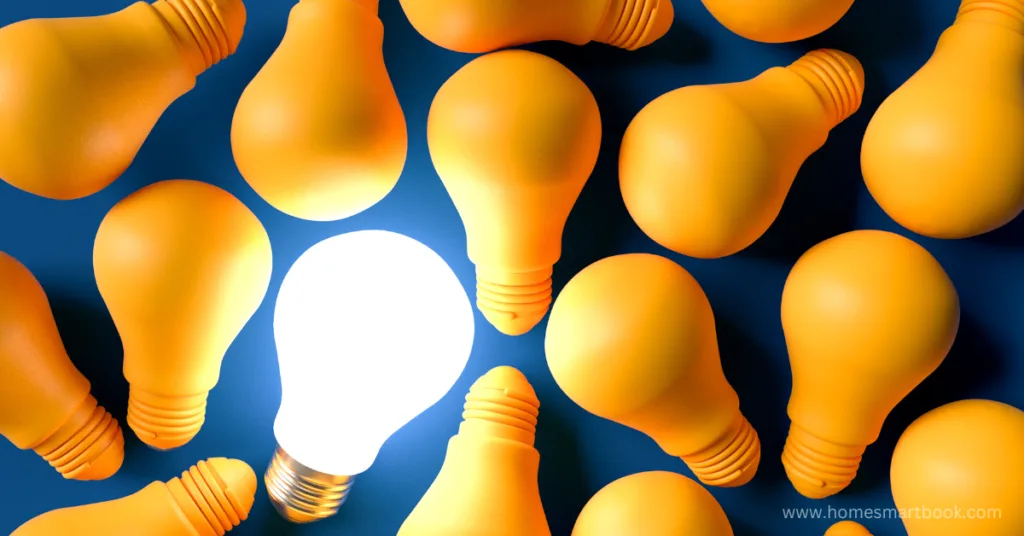Introduction
What if the Eco-Friendly Smart Lights automatically changed to suit your mood, reduced your electricity bill, and did good to the planet? All it takes is a touch on your smartphone! In 2025, all this is no longer a dream, it is a reality. Eco-Friendly Smart Lights that are good for the environment are no longer an unaffordable luxury, but a responsible lifestyle that all of us need.
Just think how beautiful it would be if the light changed automatically to suit your mood as soon as you entered your home! “Smart lights” are now going to make a big difference in our lives. With just a touch on your smartphone, you can control all the lights in your smart home. Another good thing about this is that the lights will turn off automatically when they are not needed. This will reduce your electricity bill, and at the same time, we can protect Mother Earth.
If you think that these smart lights are just a luxury, you are wrong. This is a very important thing for our future. Environmental protection has become an important issue for everyone these days. These Eco-Friendly Smart Lights are a great way to do that.
The Evolution of Smart Lighting: More Than Just Brightness
What Makes Smart Lights Eco-Friendly?
Smart lights have transcended traditional illumination. These intelligent systems combine:
- Advanced LED technology
- Wireless connectivity
- Energy consumption monitoring
- Automated efficiency mechanisms

Top 5 Benefits of Eco-Friendly Smart Lighting
1. Significant Energy Savings
Modern smart LED bulbs consume up to 75% less energy compared to traditional incandescent bulbs. By using sensors and AI-driven algorithms, these lights:
- Automatically dim when rooms are unoccupied
- Adjust brightness based on natural light conditions
- Enable precise energy consumption tracking
2. Reduced Carbon Footprint
Every smart bulb contributes to environmental conservation. Annual benefits include:
- Lower greenhouse gas emissions
- Decreased electricity demand
- Minimal electronic waste through longer lifespans

3. Smart Home Integration
These aren’t just lights—they’re intelligent home ecosystem components. Integration capabilities include:
- Voice assistant compatibility
- Scheduling and automation
- Mood and productivity optimization
- Security enhancement through randomized lighting patterns
4. Cost Effectiveness
Smart lights offer long-term financial benefits:
- Reduced electricity bills
- Lower maintenance costs
- Extended bulb lifespan
- Potential utility company rebates
5. Personalized Lighting Experience
Advanced features provide unprecedented control:
- Customizable color temperatures
- Mood-based lighting scenes
- Remote access and control
- Health-focused lighting modes that support circadian rhythms
Choosing Your Eco-Friendly Smart Light Solution
Key Considerations
- Compatibility: Ensure integration with existing smart home systems
- Energy Rating: Look for ENERGY STAR certified products
- Features: Prioritize automation and customization capabilities
- Brand Reputation: Research manufacturer’s sustainability credentials
Emerging Technologies in Smart Lighting
Solar-Powered Smart Bulbs
Innovations are pushing boundaries with:
- Built-in solar charging capabilities
- Hybrid power mechanisms
- Zero-grid lighting solutions
Insert image of solar-powered smart light prototype
Implementation Strategies for Homeowners
Gradual Transition Tips
- Start with high-traffic areas
- Replace bulbs incrementally
- Leverage manufacturer rebate programs
- Monitor energy consumption metrics
The Bigger Picture: Beyond Individual Homes
Adopting eco-friendly smart lights represents more than a personal choice. it’s a collective movement towards sustainable living. Each smart bulb installation contributes to:
- Reduced global energy consumption
- Lower carbon emissions
- Technological innovation
- Environmental consciousness
Conclusion: Illuminate Responsibly
As we embrace 2025, eco-friendly smart lights offer more than illumination—they provide a pathway to more sustainable, intelligent living. Your choice today shapes tomorrow’s environmental landscape.
FAQ’s
How can lights be eco-friendly?
Lights can be eco-friendly by using energy-efficient technologies, consuming less electricity, lasting longer, and being made with sustainable or recyclable materials.
Are smart bulbs eco-friendly?
Yes, smart bulbs are eco-friendly as they use energy-efficient LEDs, allow precise control to reduce energy waste, and have longer lifespans compared to traditional bulbs.
What is the most environmentally-friendly light?
LED lights are the most environmentally-friendly option due to their high energy efficiency, long lifespan, and minimal heat emission.
How are smart lighting systems sustainable?
Smart lighting systems are sustainable by enabling automated control, reducing energy usage with motion sensors, dimming options, and integration with renewable energy sources.
What are the eco-friendly solutions to lighting?
Eco-friendly lighting solutions include LED bulbs, solar-powered lights, smart lighting systems, and energy-saving fixtures designed with sustainable materials.

